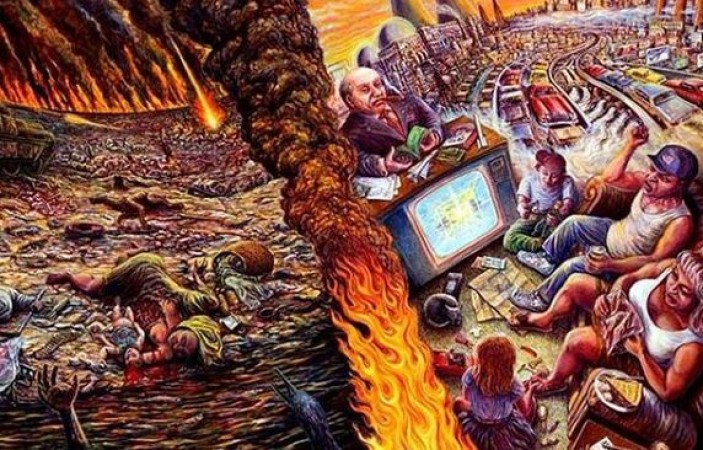
Our world is steeped in mysteries, and among them lies the concept of "Yugas" — epochs or ages that span thousands of years according to Hindu scriptures. These Yugas are cyclical in nature, each characterized by distinct moral, societal, and spiritual qualities. Among them, Kali Yuga stands out as the most challenging and tumultuous period, marked by a decline in righteousness and a prevalence of moral decay.
What is Kali Yuga?
In Hindu cosmology, Kali Yuga is described as the last of the four Yugas, following Treta Yuga, Dwapara Yuga, and Satya Yuga. It is believed to be an age of darkness, where moral values deteriorate, and spiritual awareness diminishes. The scriptures, particularly the Puranas, provide detailed accounts of the characteristics and events associated with each Yuga, including the signs that herald their beginning and end.
Prophecies about the End of Kali Yuga
According to ancient Hindu texts, Kali Yuga is destined to end with dramatic and transformative events. These prophecies outline various indicators that signify the culmination of this age. One prominent prophecy suggests that as Kali Yuga progresses towards its conclusion, societal norms will degrade significantly. There will be a widespread disregard for ethical principles, with materialism and selfishness prevailing over spiritual pursuits.
Signs of the End Times
Several signs are foretold to manifest as the end of Kali Yuga approaches. One such prophecy is the drying up of the river Ganga, considered sacred by Hindus. It is prophesied to occur after five thousand years into Kali Yuga, symbolizing a severance between the divine and the earthly realms. Subsequently, after ten thousand years, it is believed that all celestial beings (deities) will depart from Earth, withdrawing their presence from human affairs.
Environmental and Societal Degradation
In addition to spiritual decline, the scriptures also predict environmental degradation and societal upheaval towards the end of Kali Yuga. It is said that agriculture will decline, leading to food scarcity and famine. The Earth itself is prophesied to become barren, unable to sustain life as it once did. These environmental catastrophes are portrayed as consequences of humanity's moral and spiritual decline.
The Role of Kalki Avatar
Central to the prophecies about the end of Kali Yuga is the appearance of Kalki Avatar, the tenth and final incarnation of Lord Vishnu. Kalki Avatar is believed to descend upon Earth to restore righteousness (dharma), punishing the wicked and ushering in a new era of truth and justice. This event signifies the completion of the Yuga cycle and the beginning of a fresh epoch, where virtue and spiritual enlightenment will once again flourish.
Implications for Humanity
The prophecies of Kali Yuga's end serve as a cautionary tale about the consequences of moral decay and spiritual neglect. They urge humanity to reflect on its actions and strive for a balanced existence that harmonizes material progress with ethical values. The cyclical nature of Yugas teaches us that every age, no matter how turbulent, eventually gives way to renewal and transformation.
As we contemplate the prophecies surrounding Kali Yuga, we are reminded of the impermanence of worldly pursuits and the enduring relevance of spiritual wisdom. The end of Kali Yuga is not just a forecast of doom but a reminder of the cyclical nature of time and the opportunity for spiritual growth amidst life's challenges. By understanding these prophecies, we gain insight into the broader cosmic order and our role within it, encouraging us to strive for a higher state of consciousness and moral integrity.
This comprehensive understanding of Kali Yuga's end invites us to ponder our place in the universe and the choices we make, emphasizing the eternal quest for spiritual enlightenment and ethical living.
Thane Court Sentences Man to 10 Years for Sexual Assault on Minor
Vanessa Hudgens Welcomes First Child with Cole Tucker on His Birthday
iPhone 16 Leaks: All New Models to Feature A18 Chipset